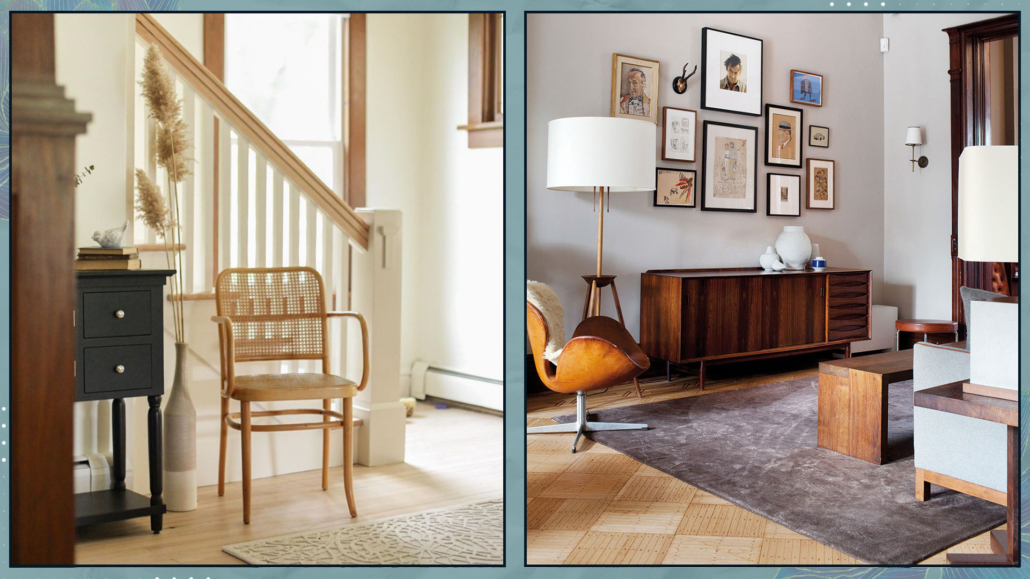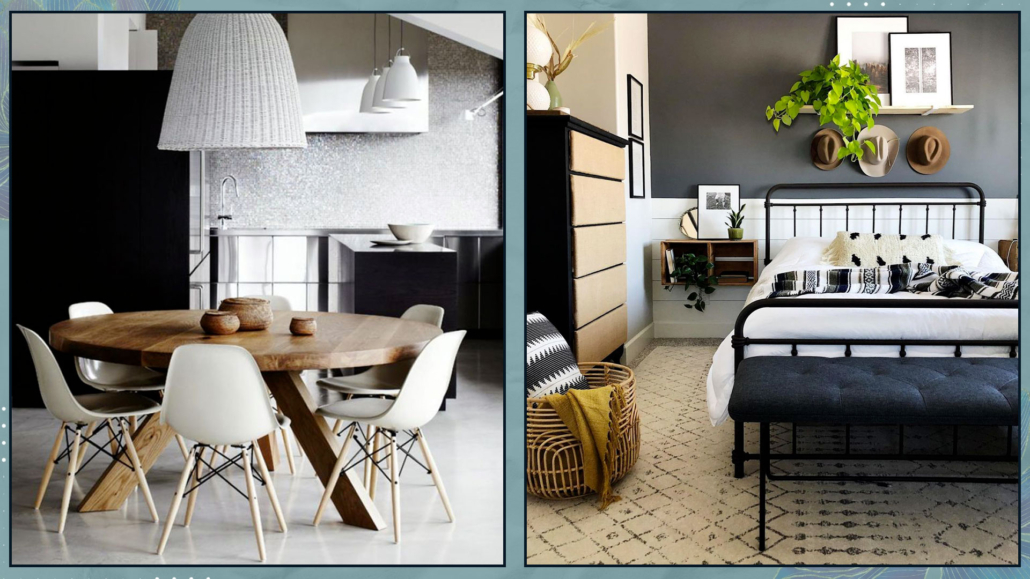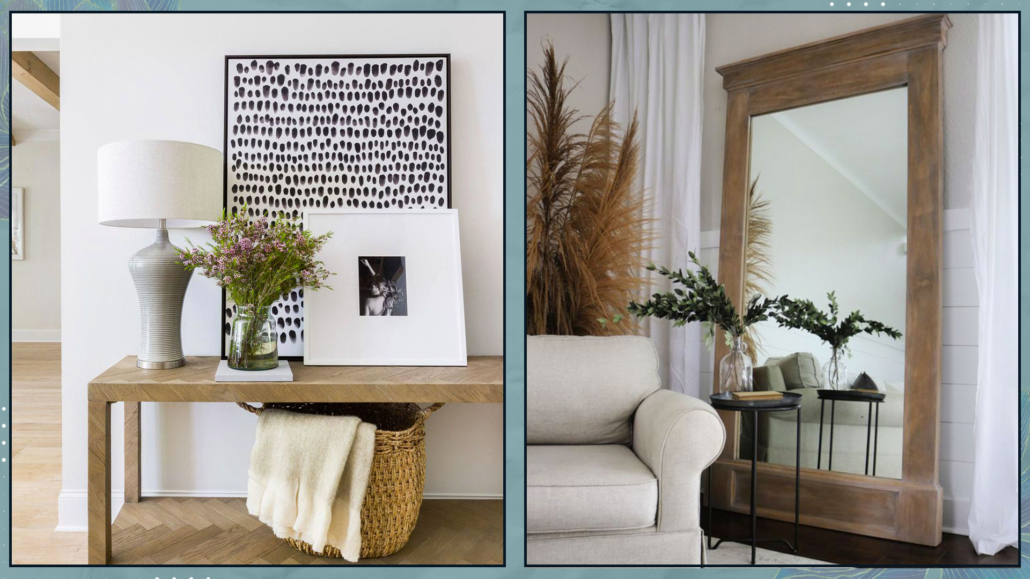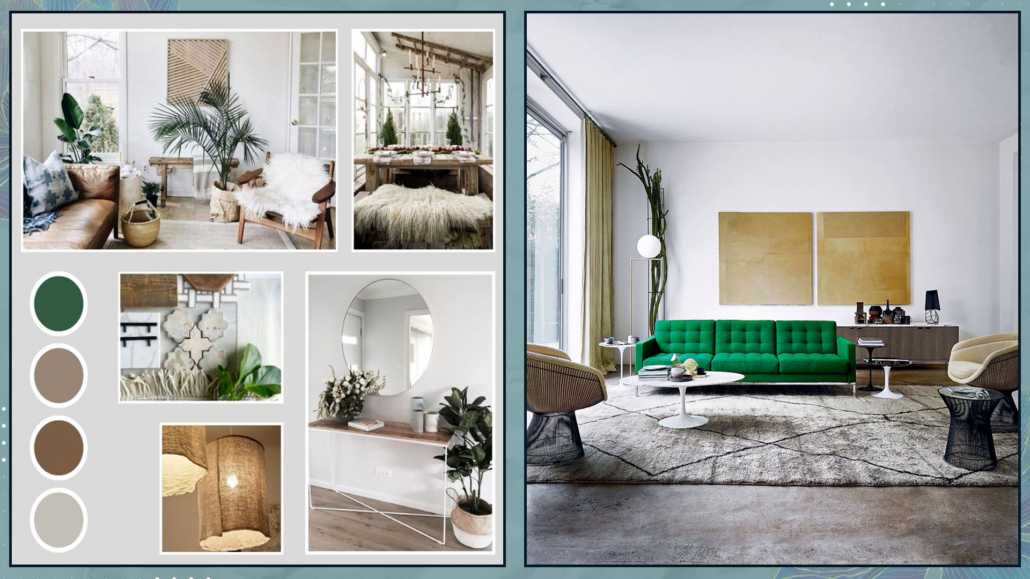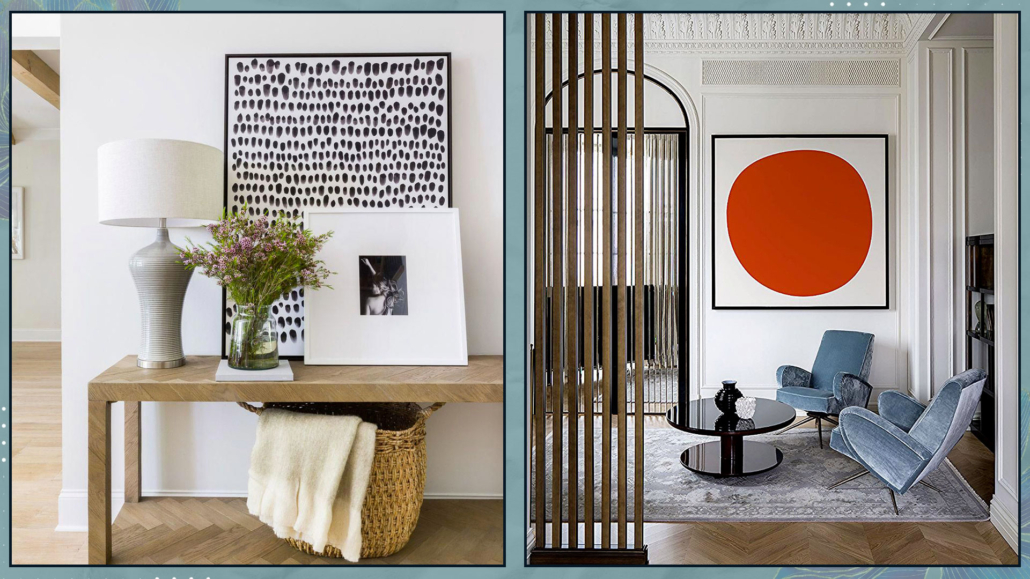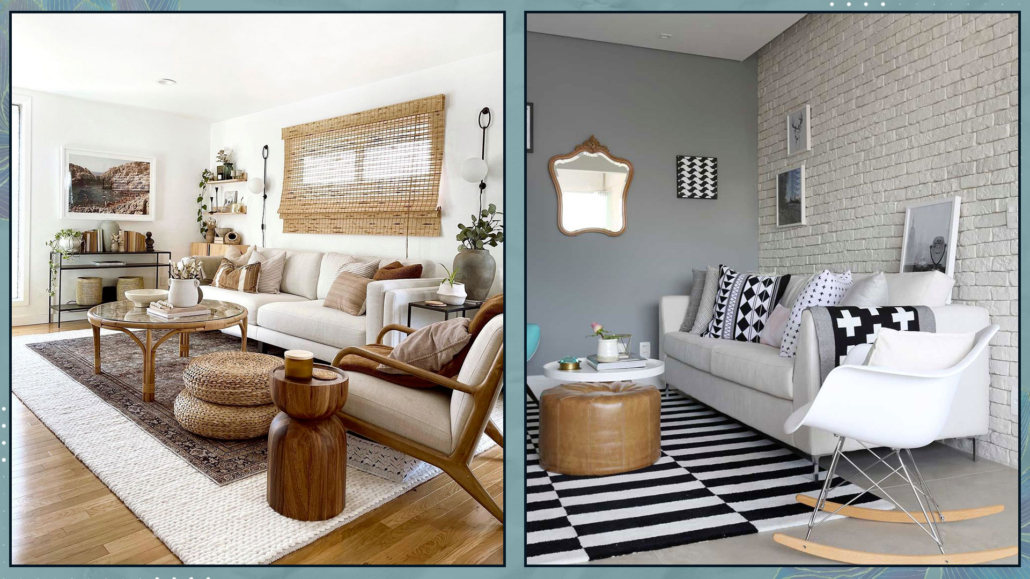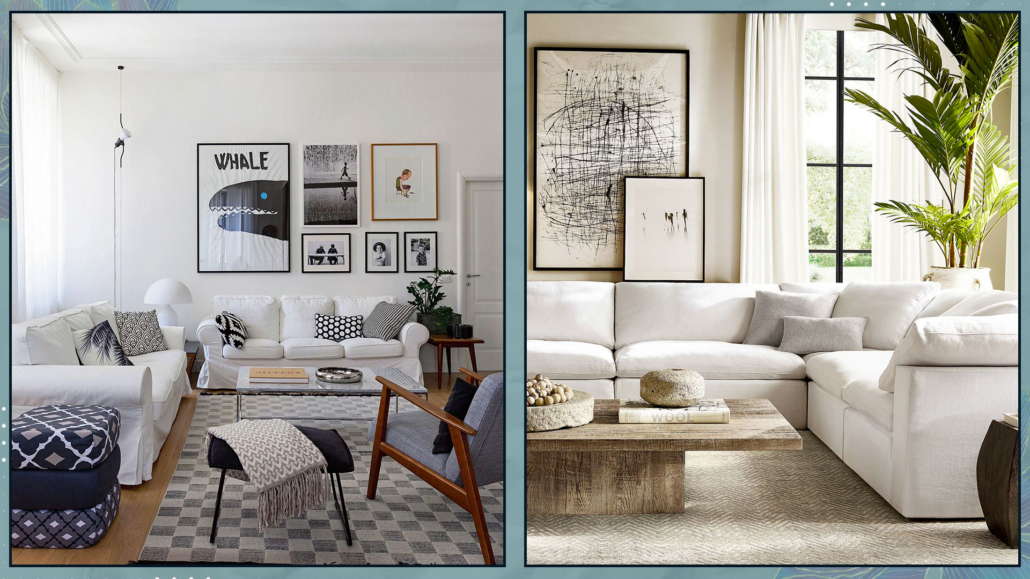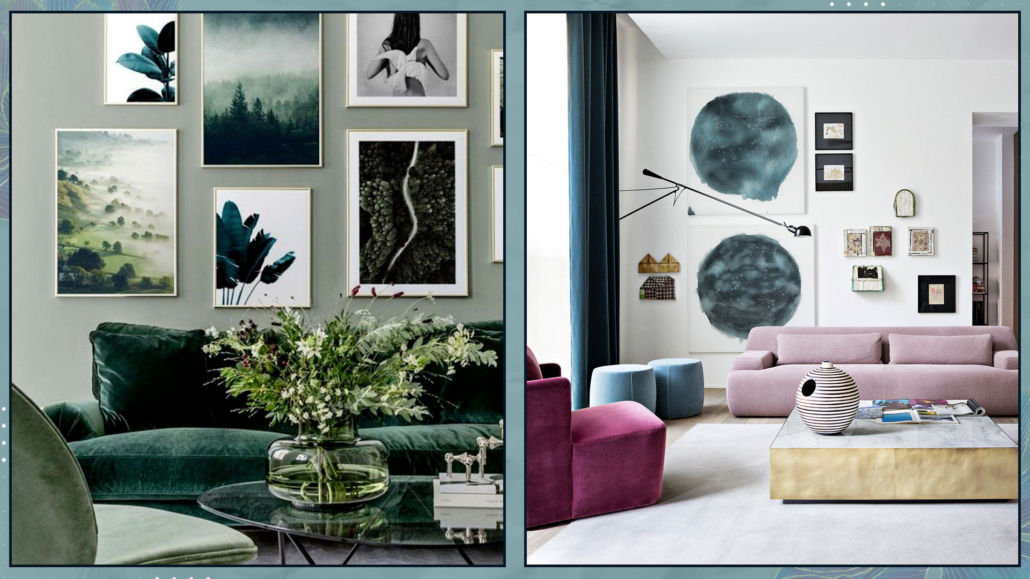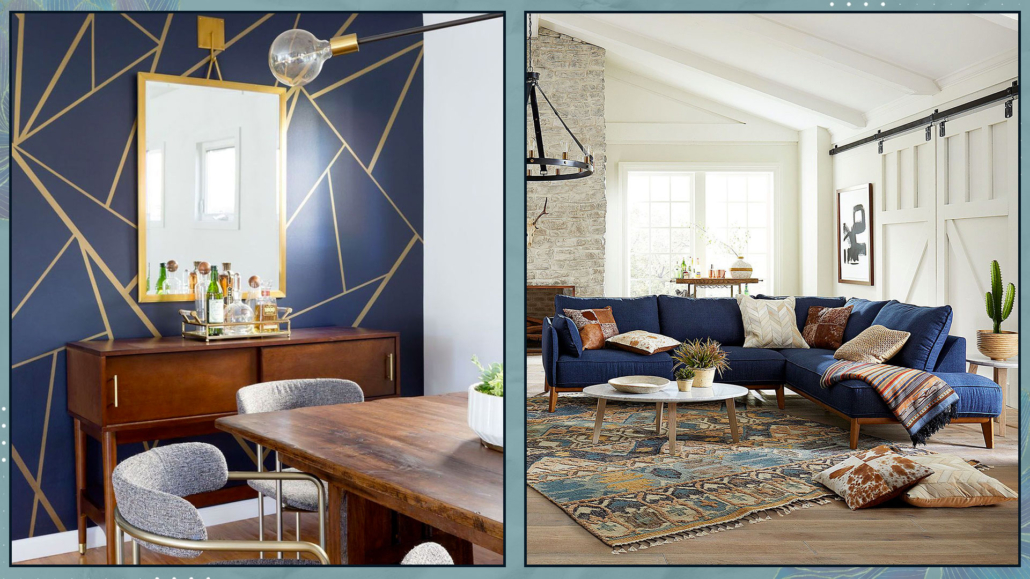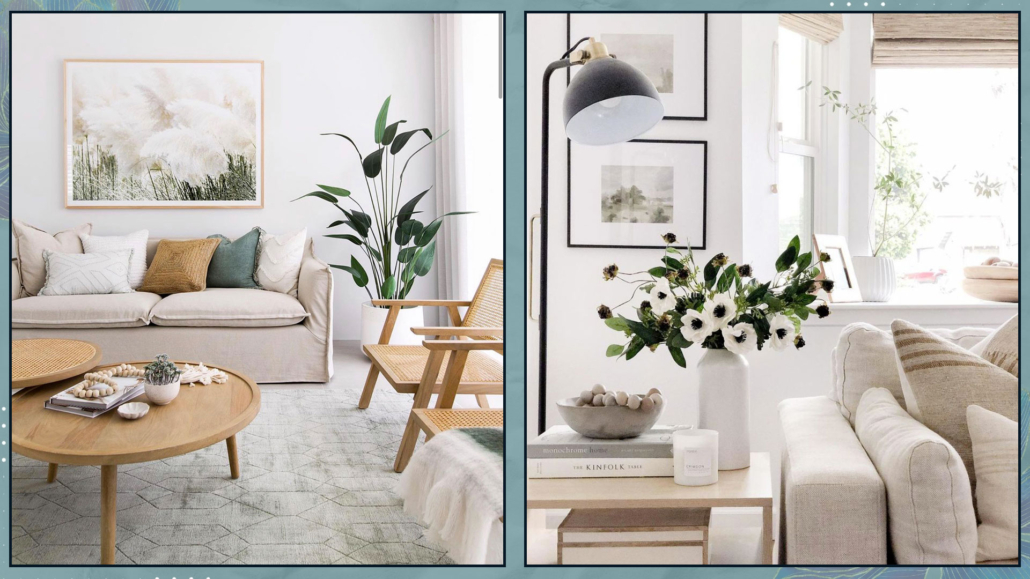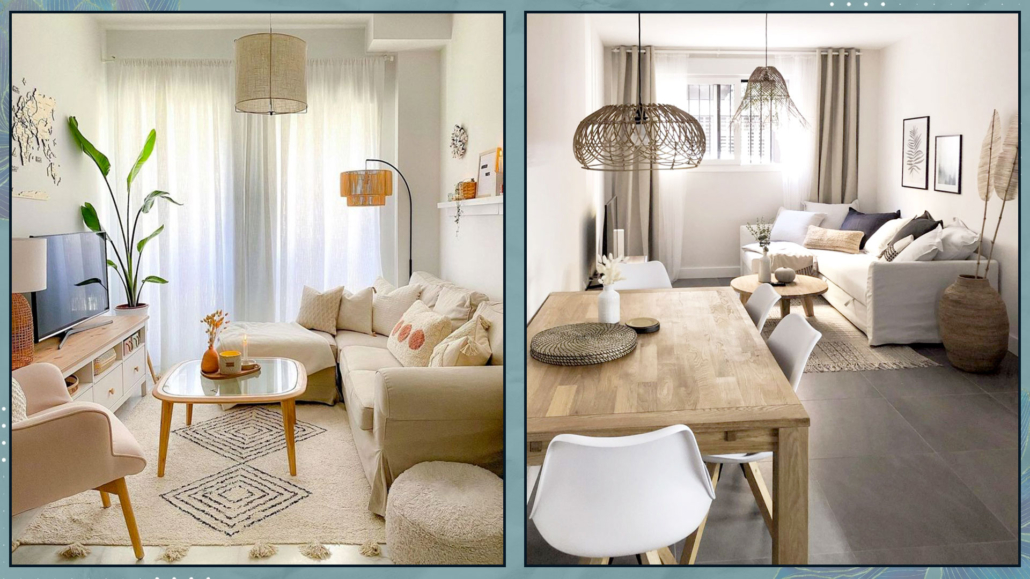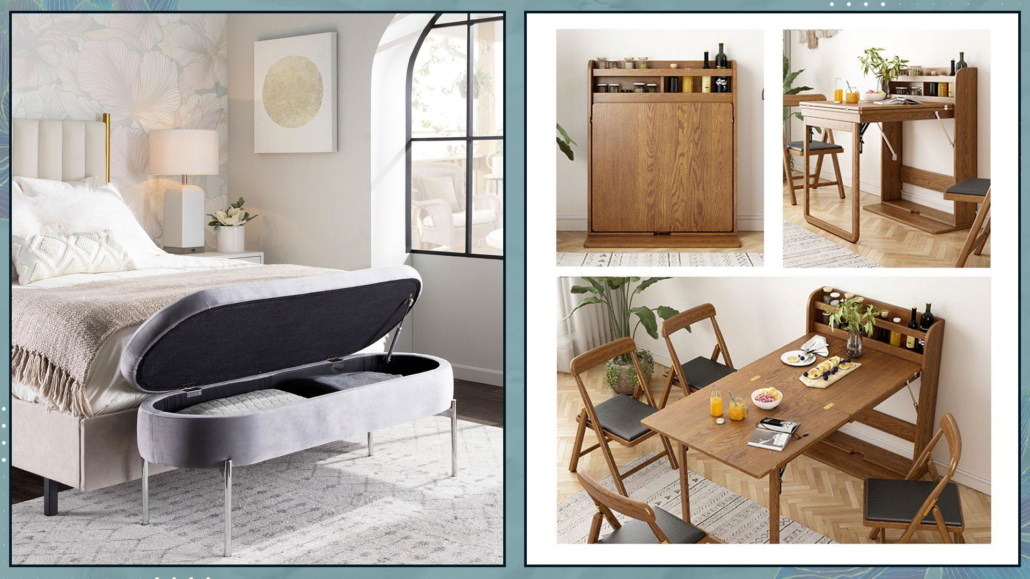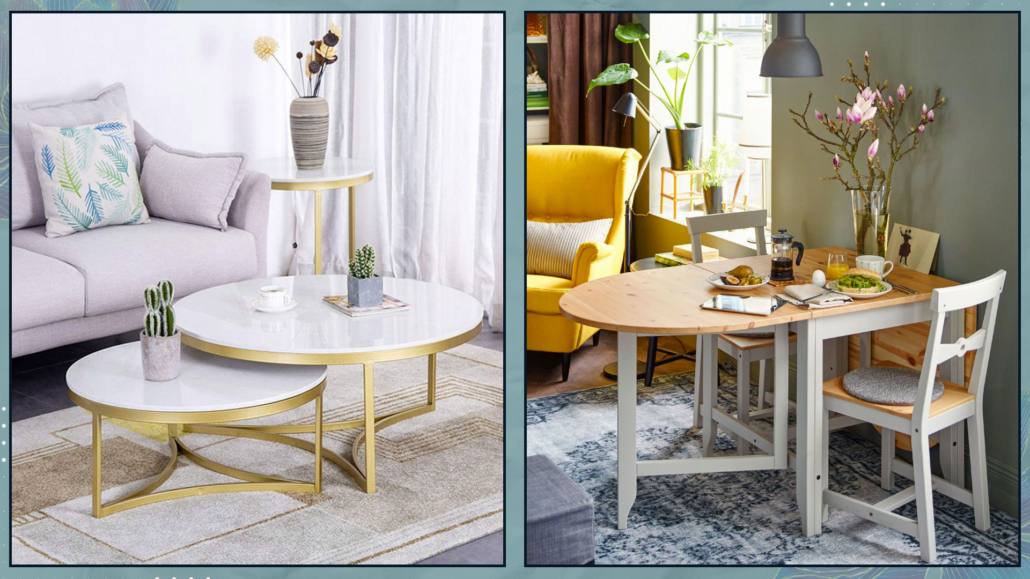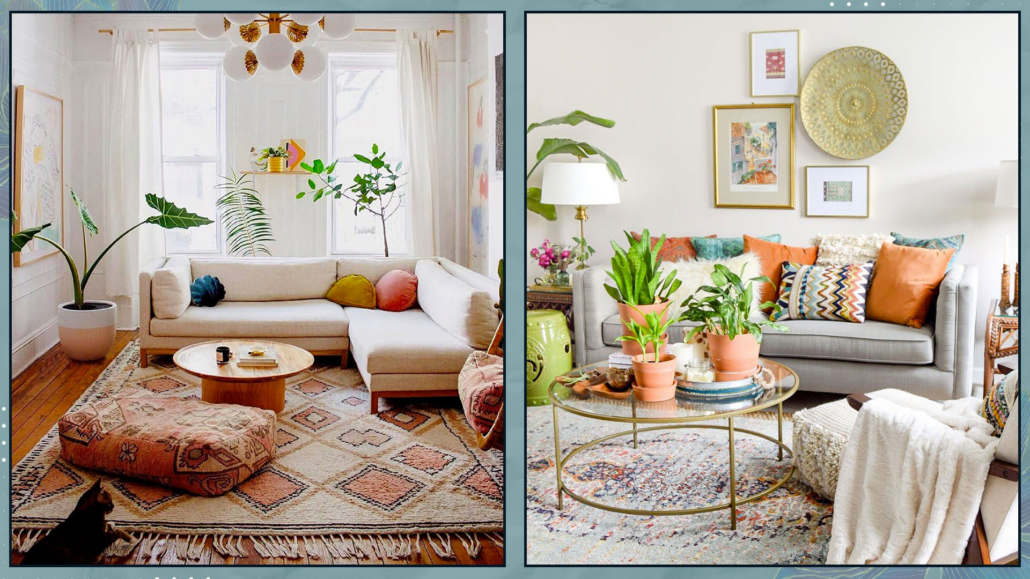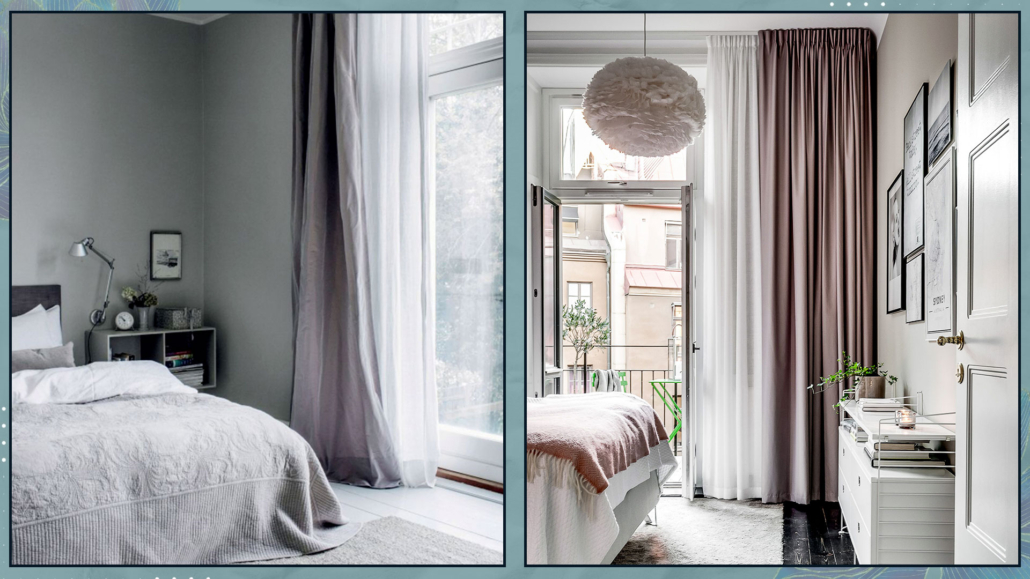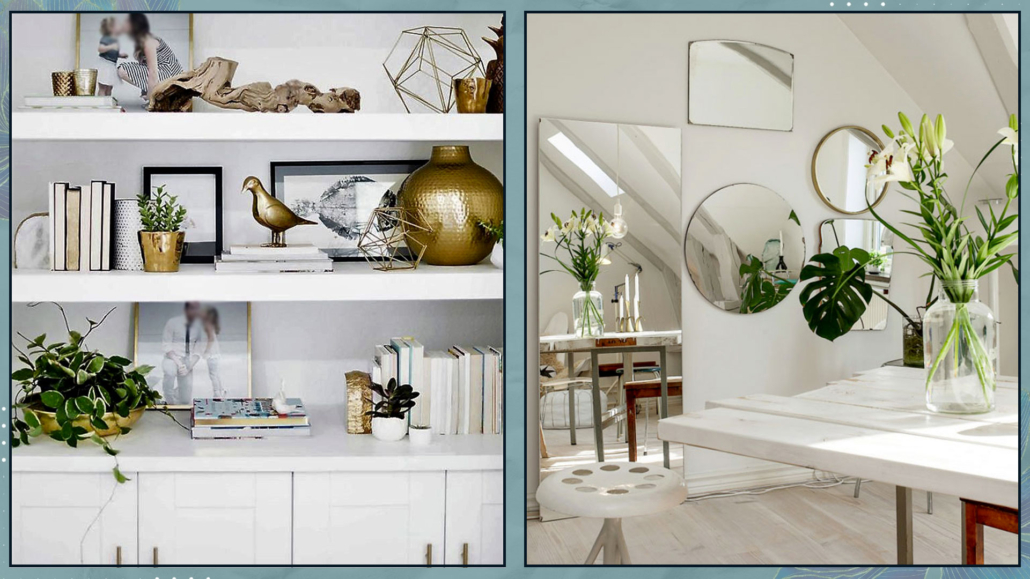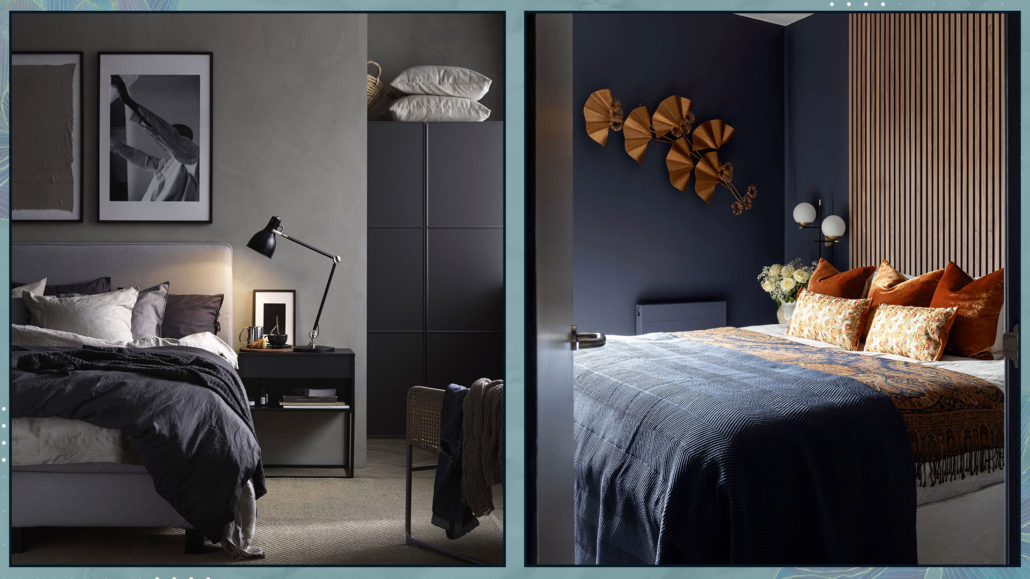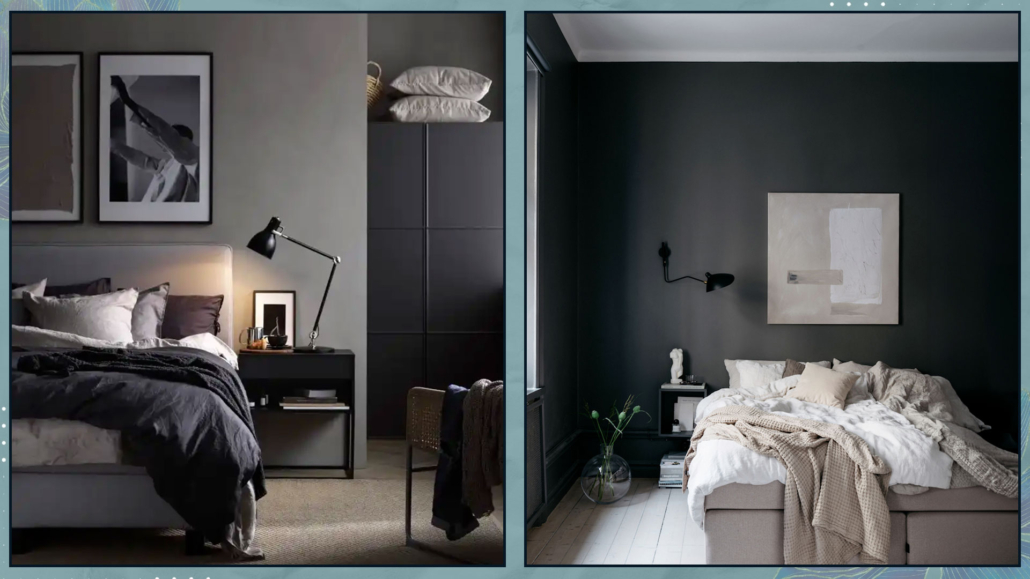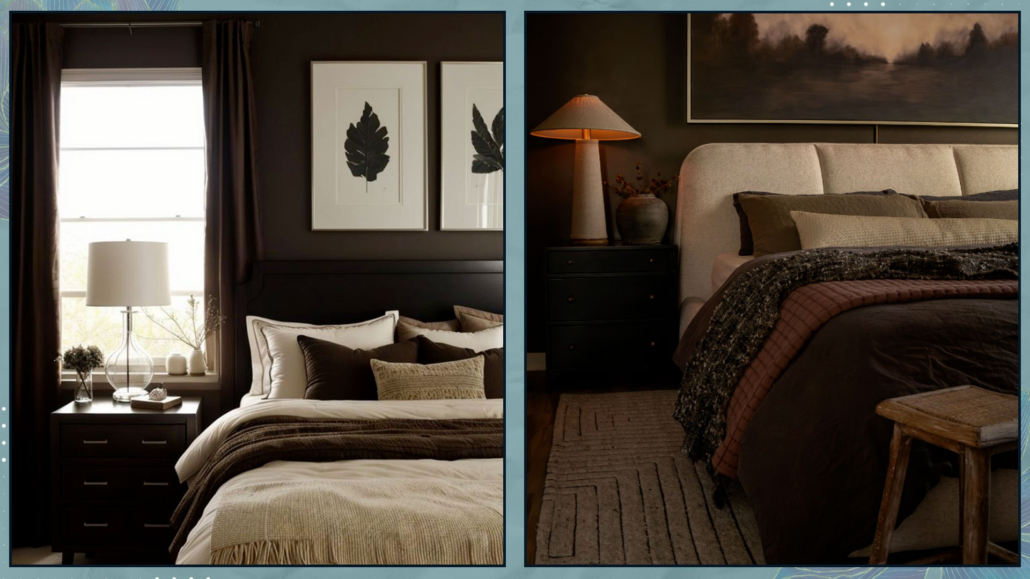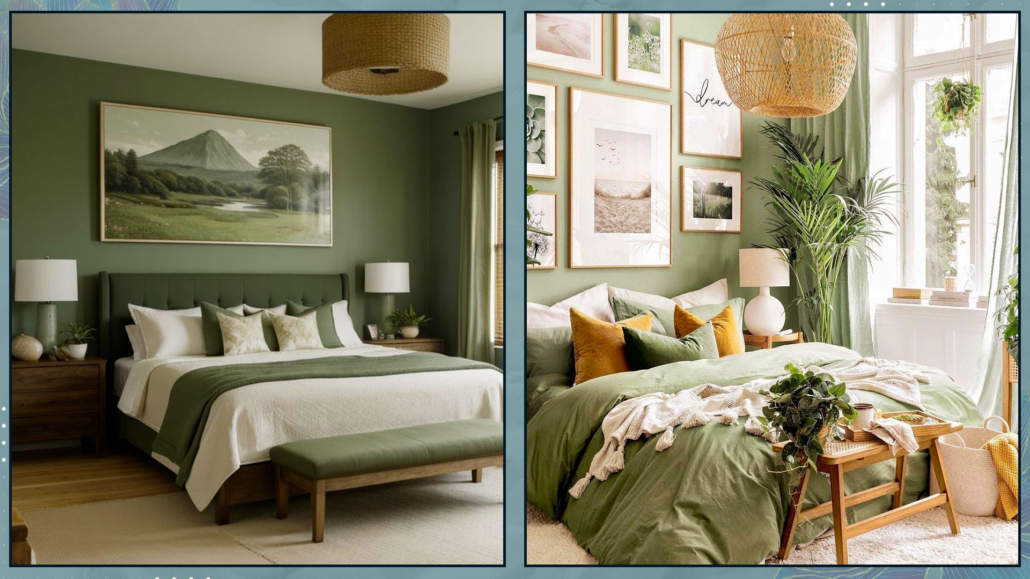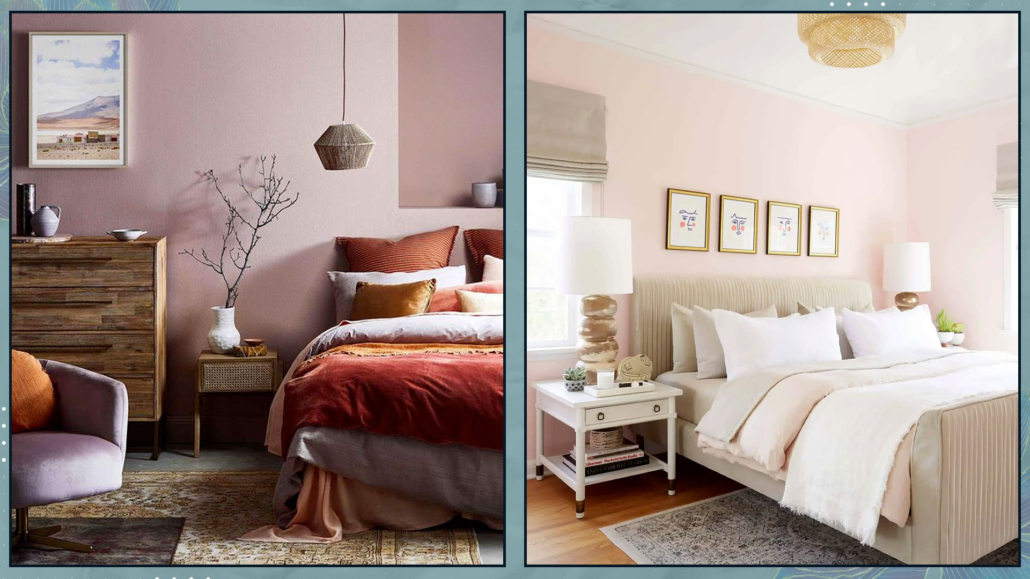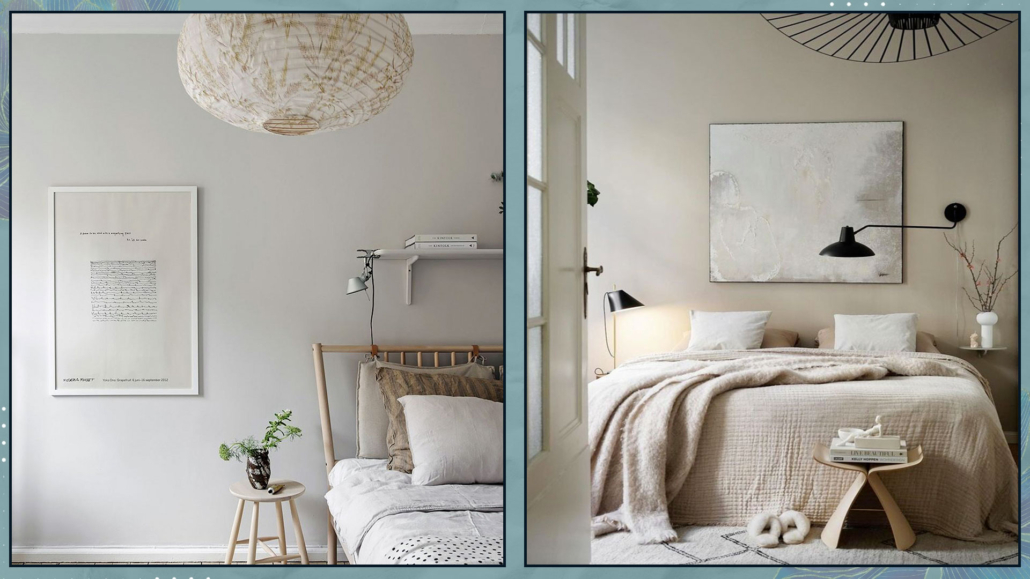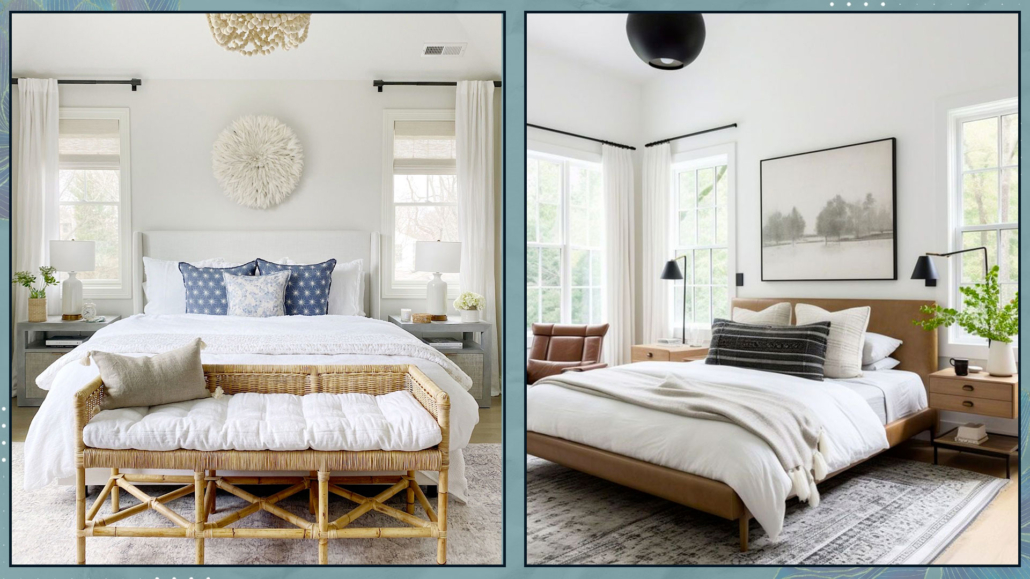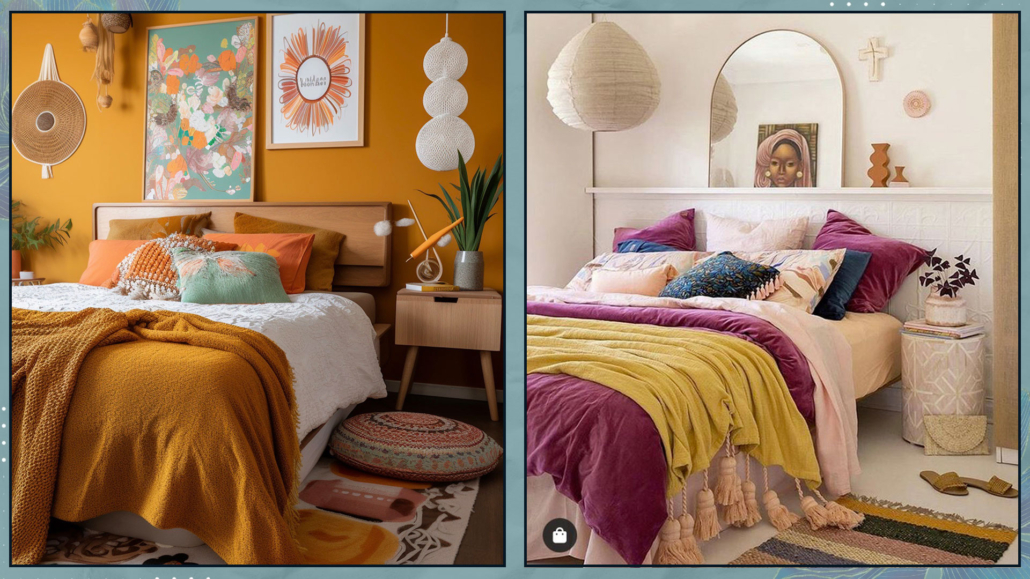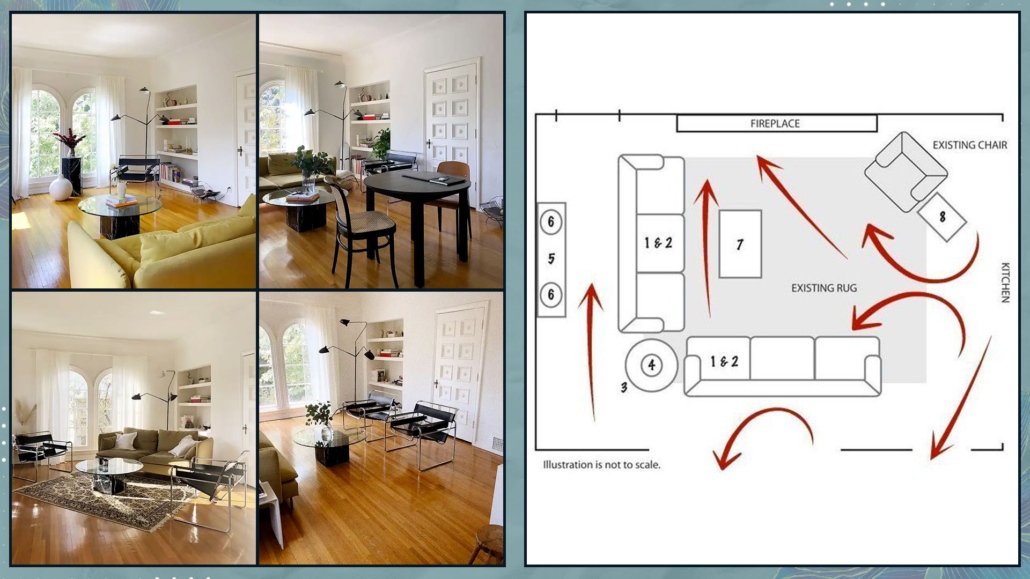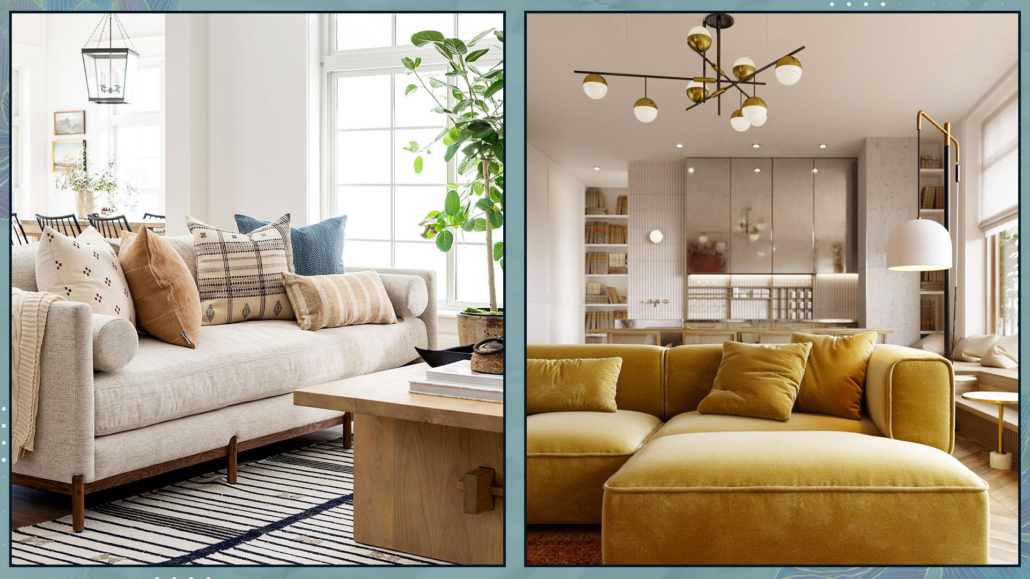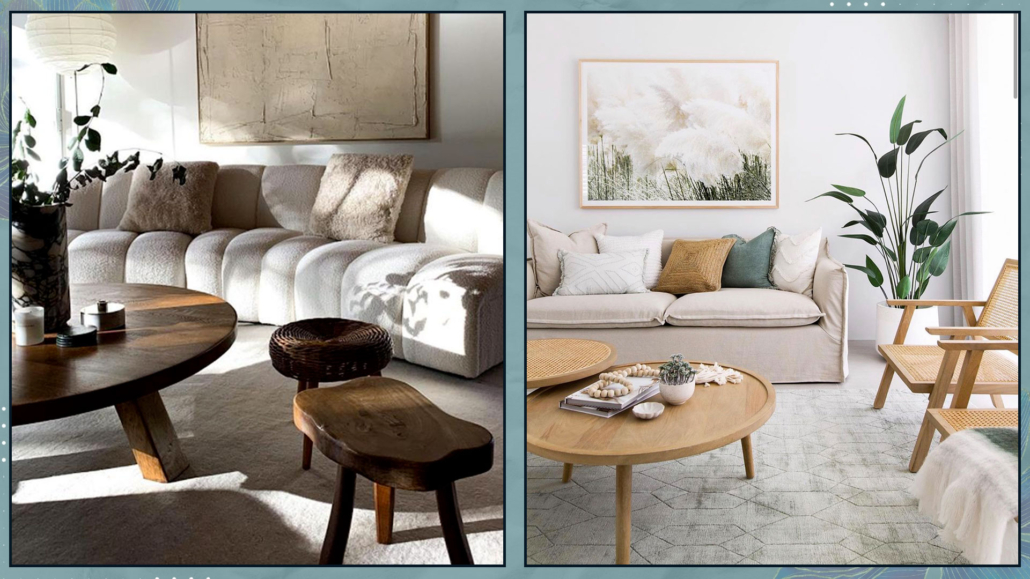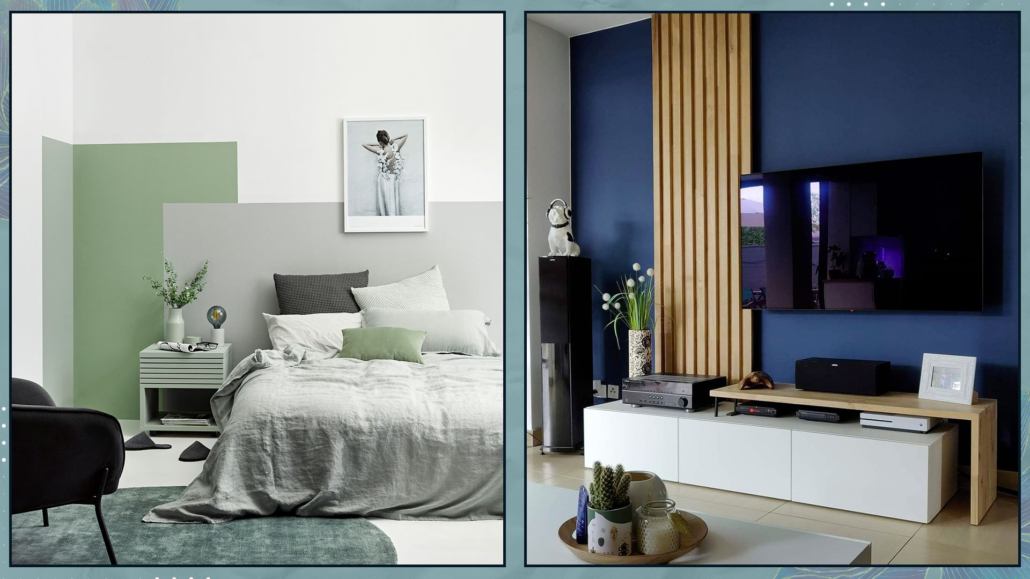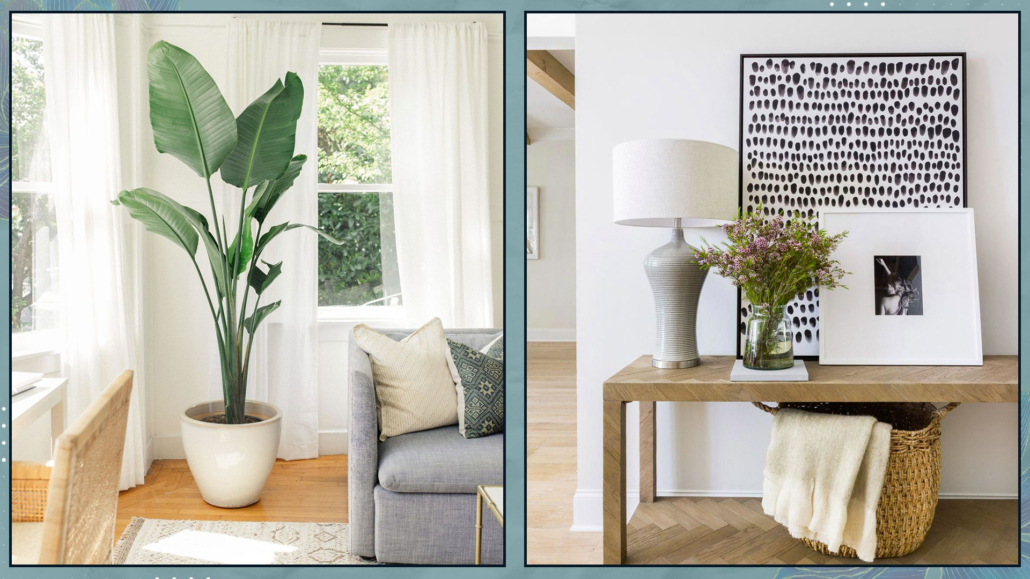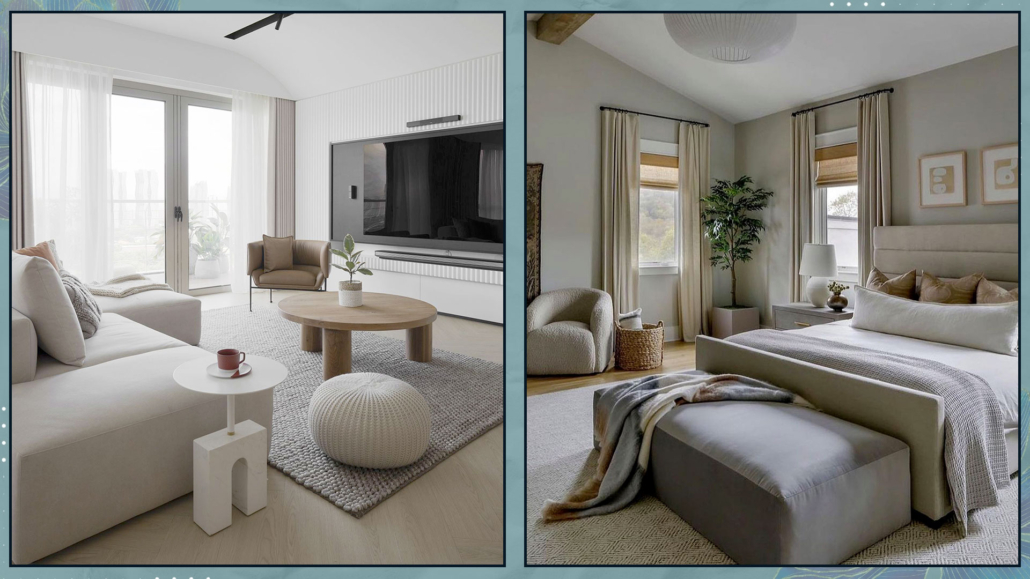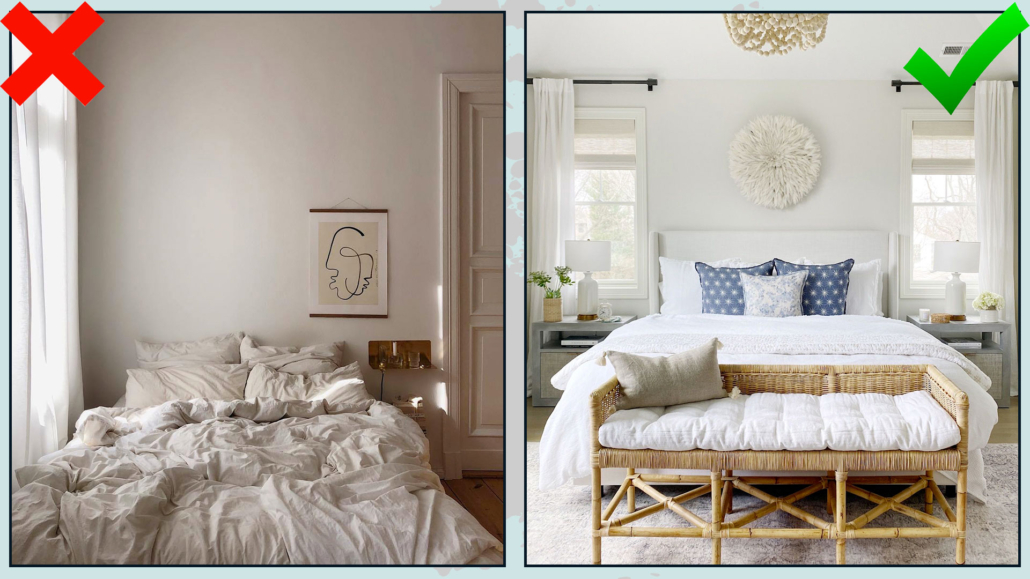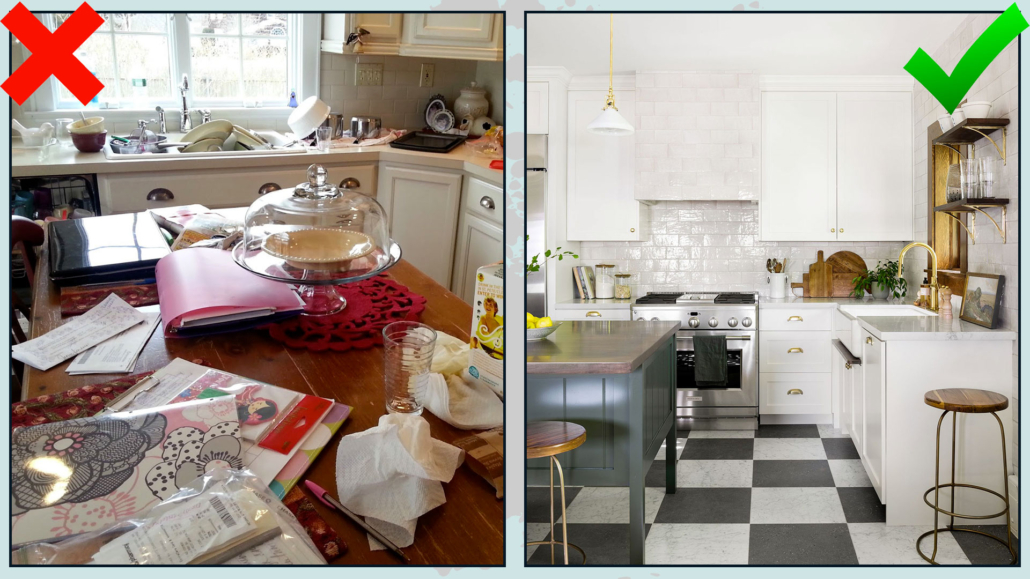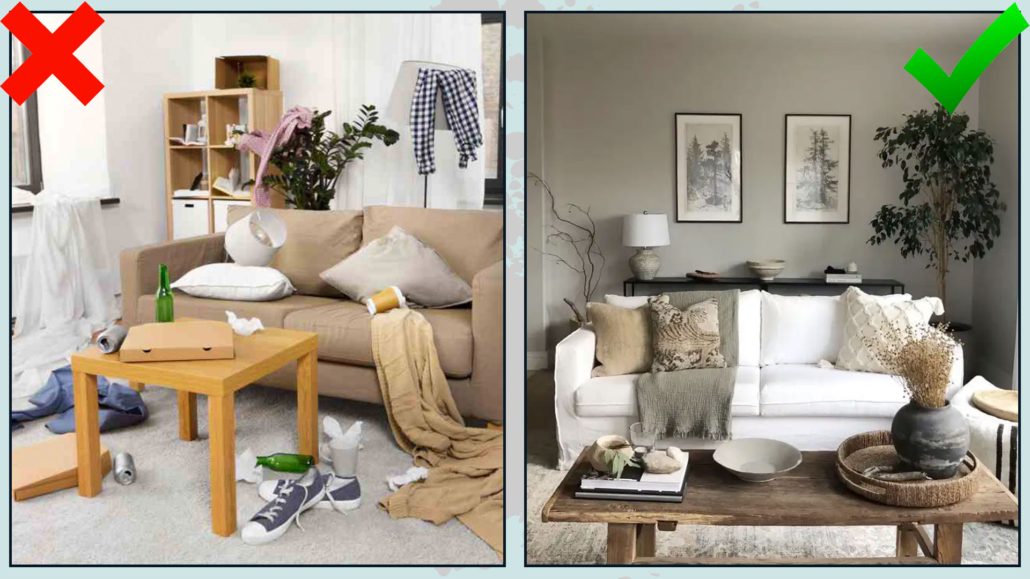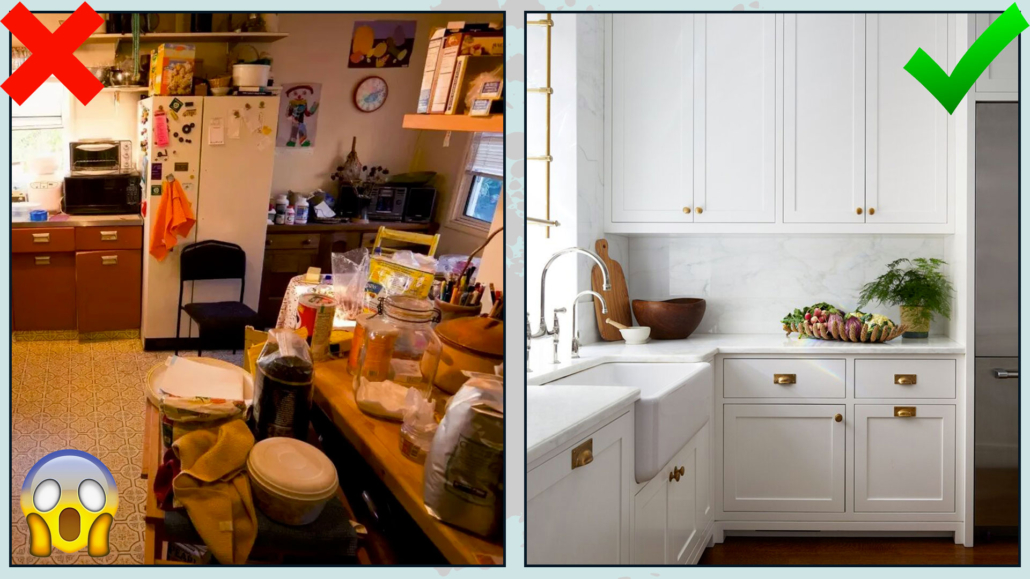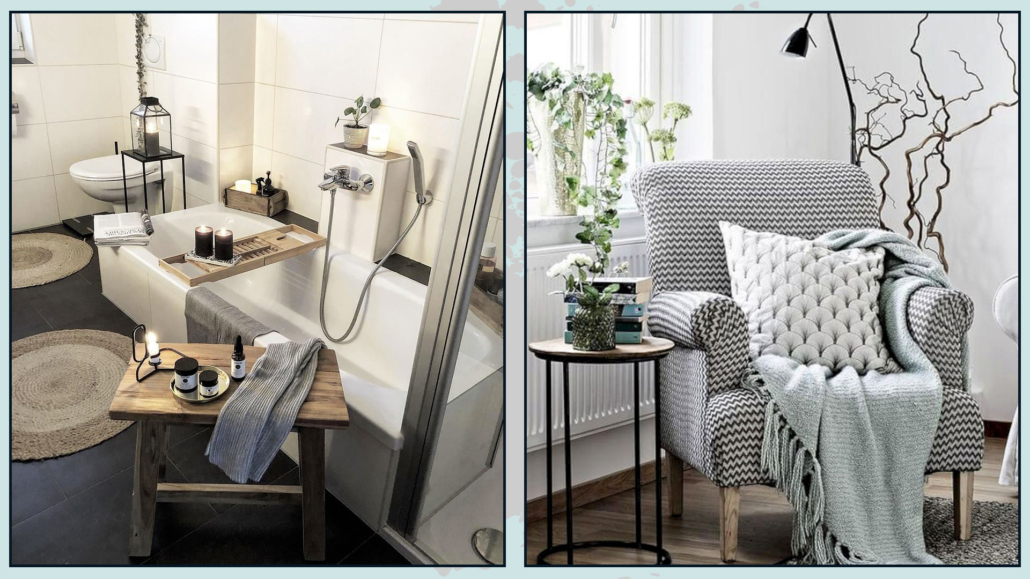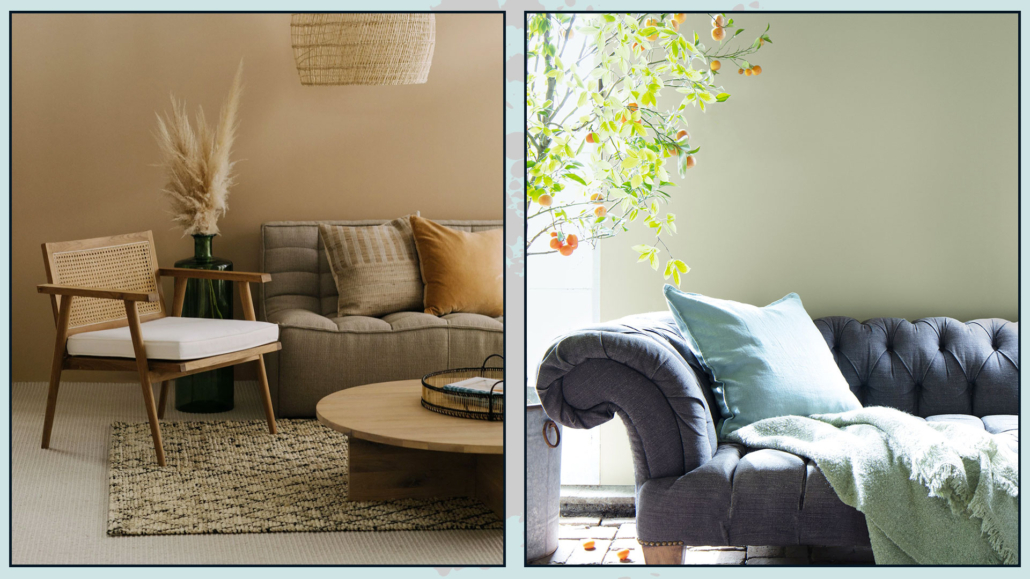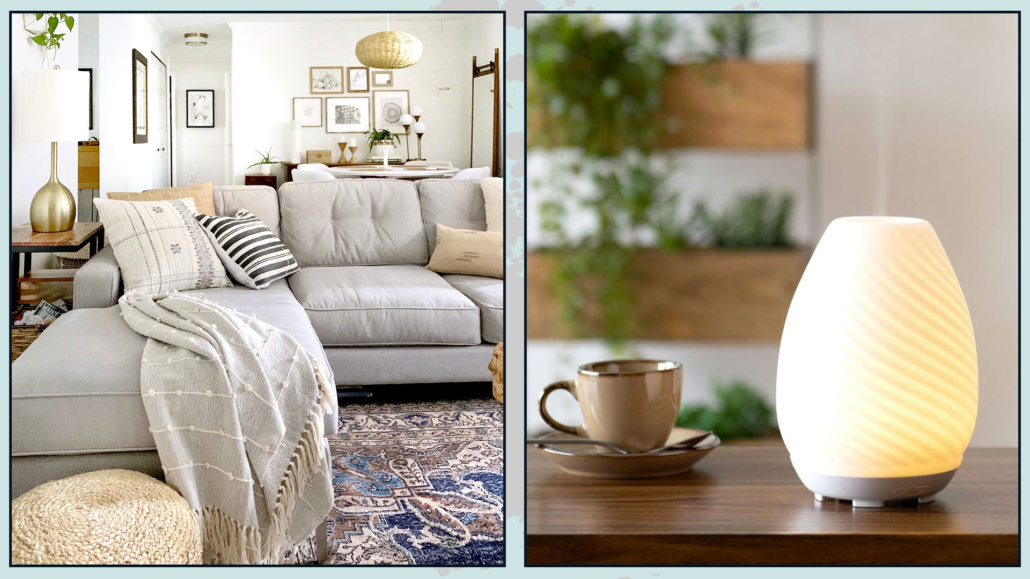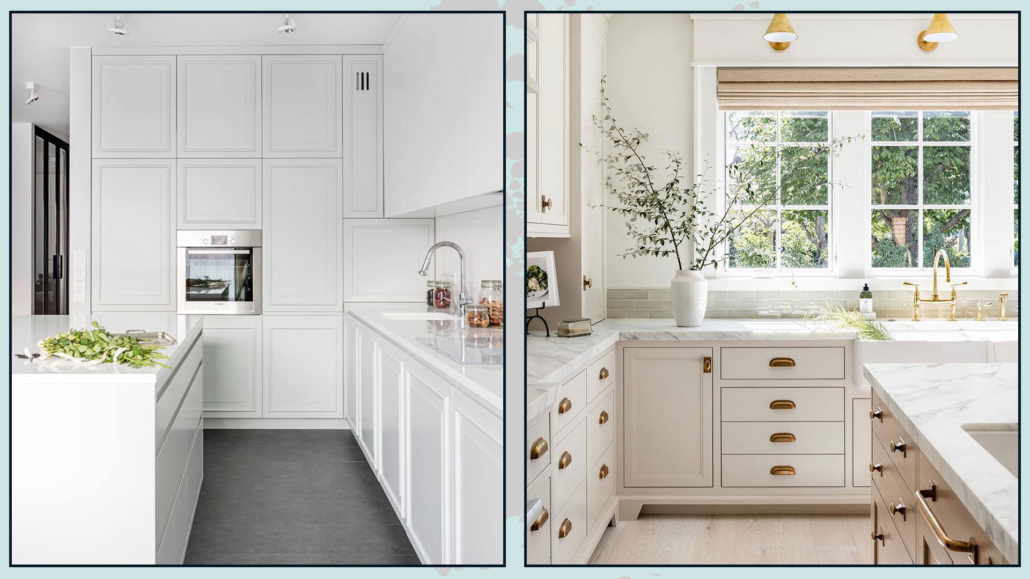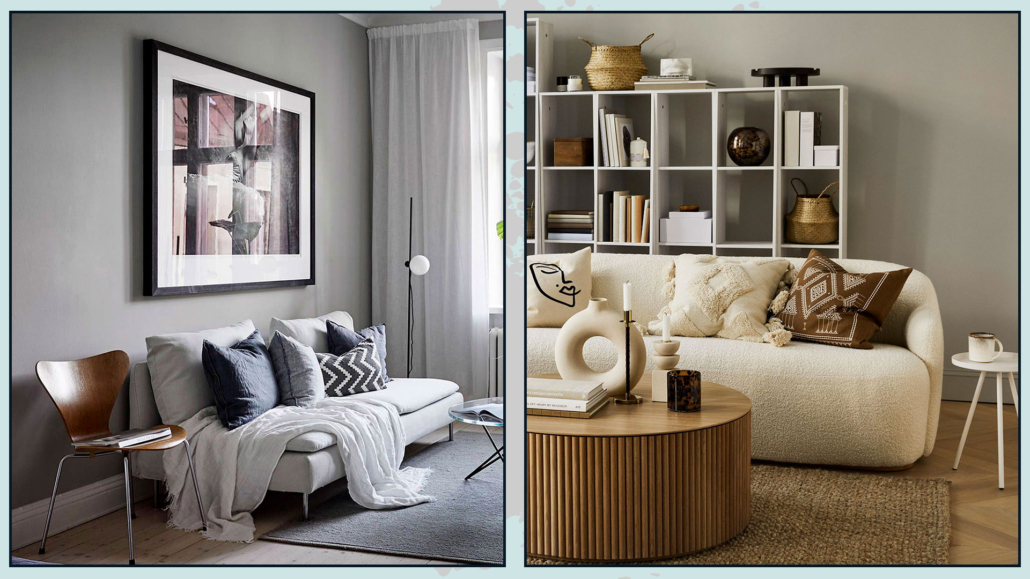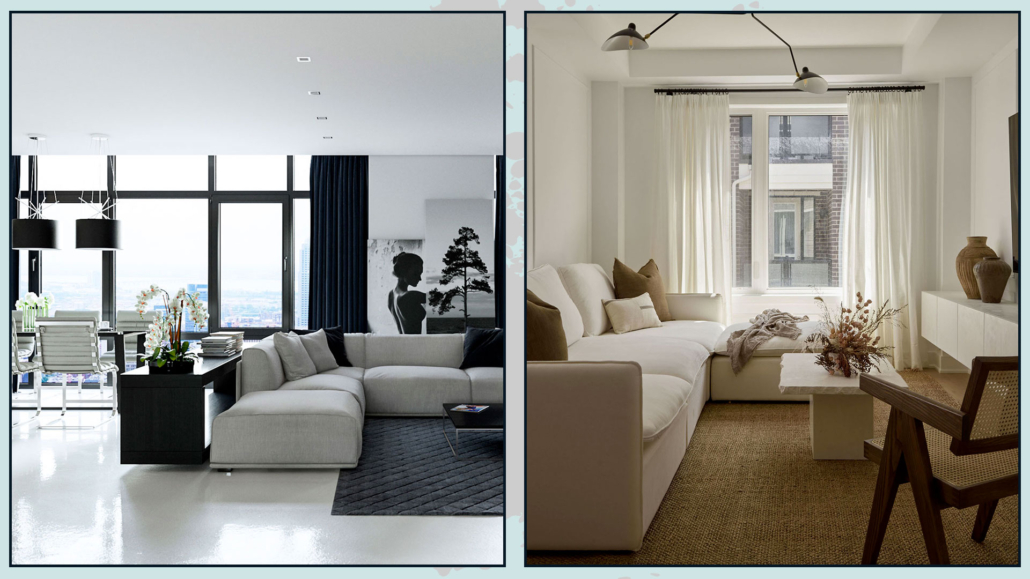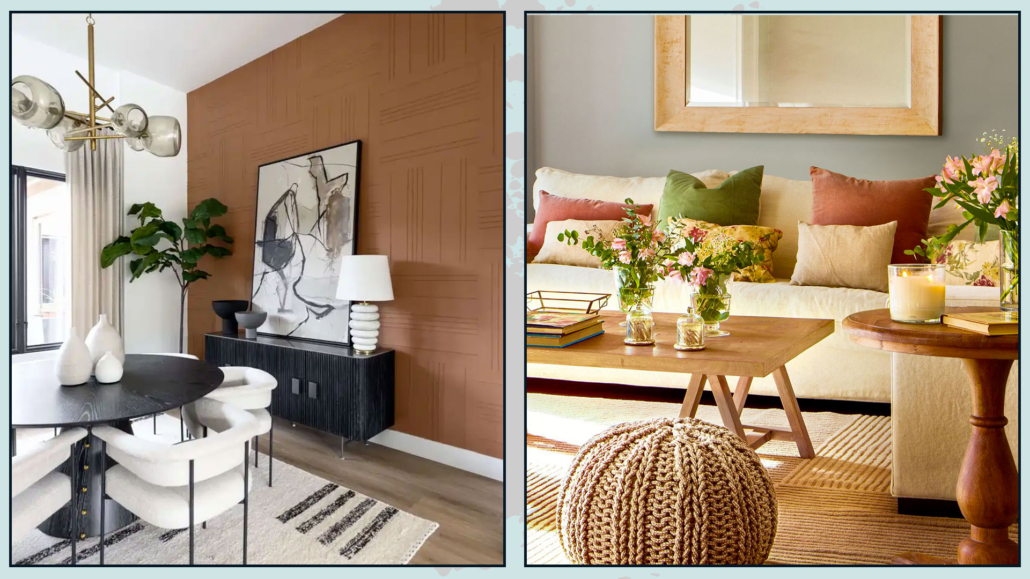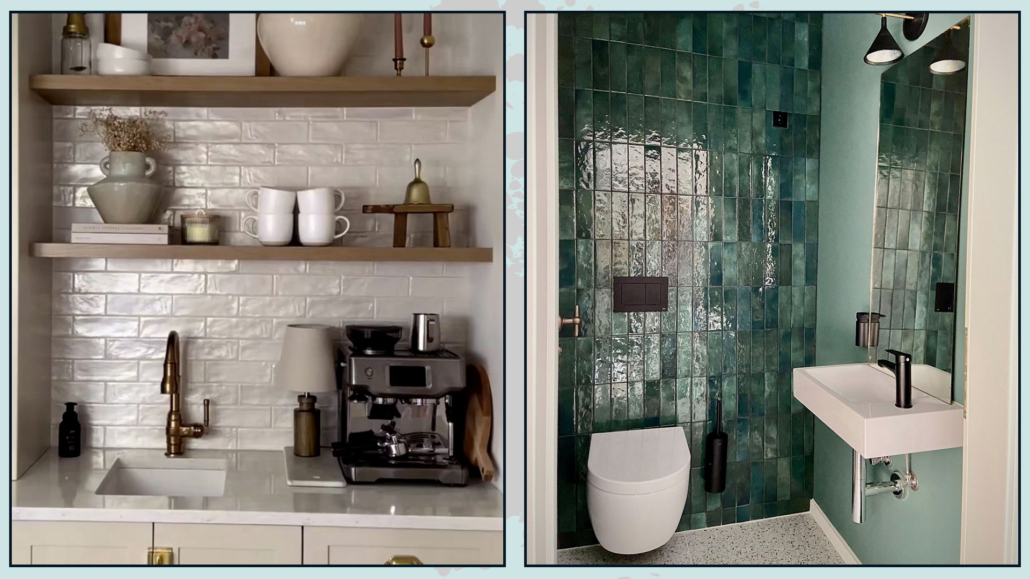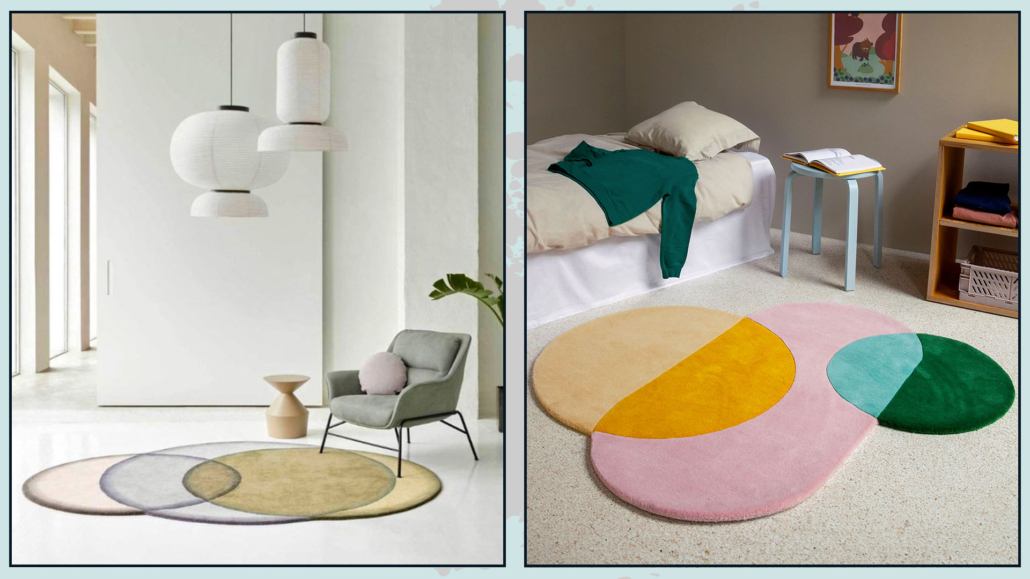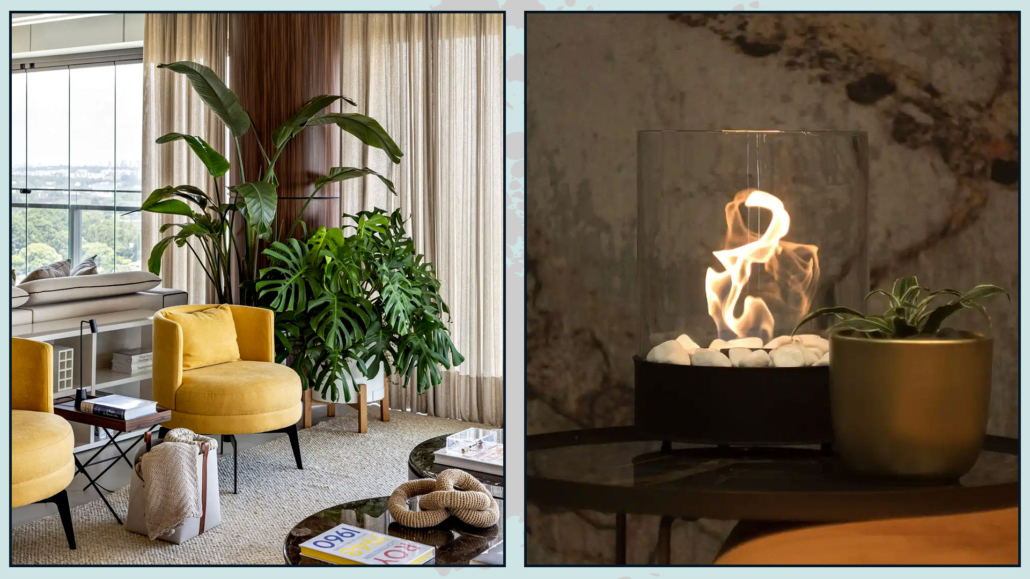A small bedroom is one of the most challenging spaces to furnish because it contains the most cumbersome furniture, like the bed, which you can’t do without!
So, let’s see what to do when you have a small bedroom and want to make it functional and cozy!
– PRIORITIZE THE ESSENTIALS
If the bedroom is small, it’s best not to overcrowd it, as it might become stifling!
The bed and wardrobe are the essentials you can’t do without; everything else is extra!
For instance, you can have an integrated dresser in the wardrobe!
Consider the correct size of these elements, not just concerning the room’s size but what suits your needs as well.
Let me explain: if you’re single, there’s no point in getting a double bed; you could opt for a one-and-a-half size bed or, if you prefer, one of those single beds that, besides a headboard and footboard, also have a backrest.
With the proper pillows, these beds can transform into a sofa during the day, which can be helpful if the room also has other purposes, like a study!
The same goes for the length; if you’re not a basketball player, you can get a 1.90m bed instead of a 2.00m one.
In small spaces, even 10 cm can make a difference.
Arrange everything to have adequate space for moving around and comfortably accessing everything!
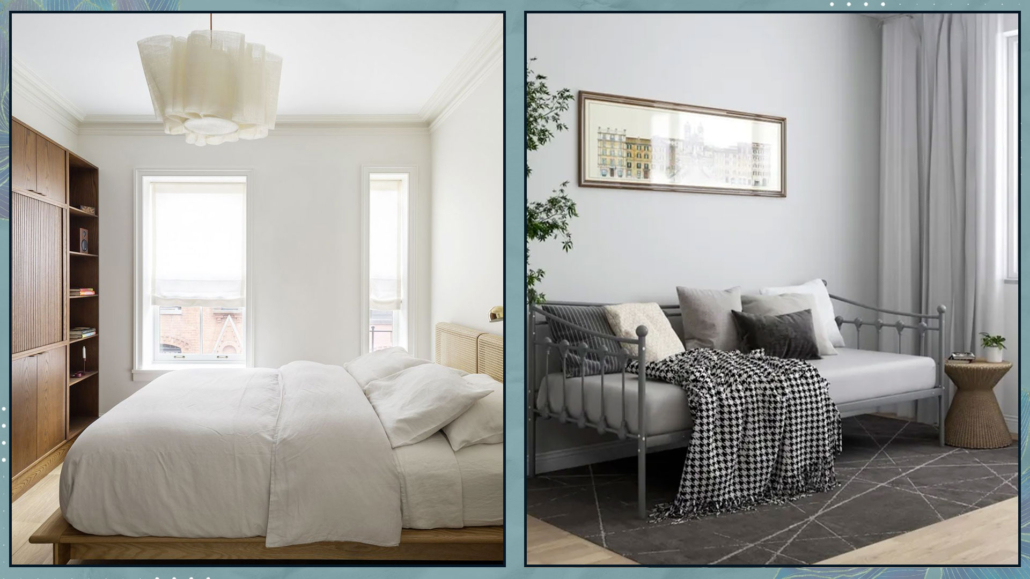
(credits: Elizabeth Roberts Architects; leroymerlin.it)
– UTILIZE VERTICAL SPACE
Especially for the wardrobe, utilize the height rather than the width.
Even if there is space for a medium-large wardrobe, look for a smaller but taller one.
The storage space will be the same, but the room will feel more open, potentially allowing space for another element.
You can also opt for a bridge wardrobe to use the entire bed wall and give the rest of the room more breathing space.
Consider placing shelves above the door as well to gain more storage space.
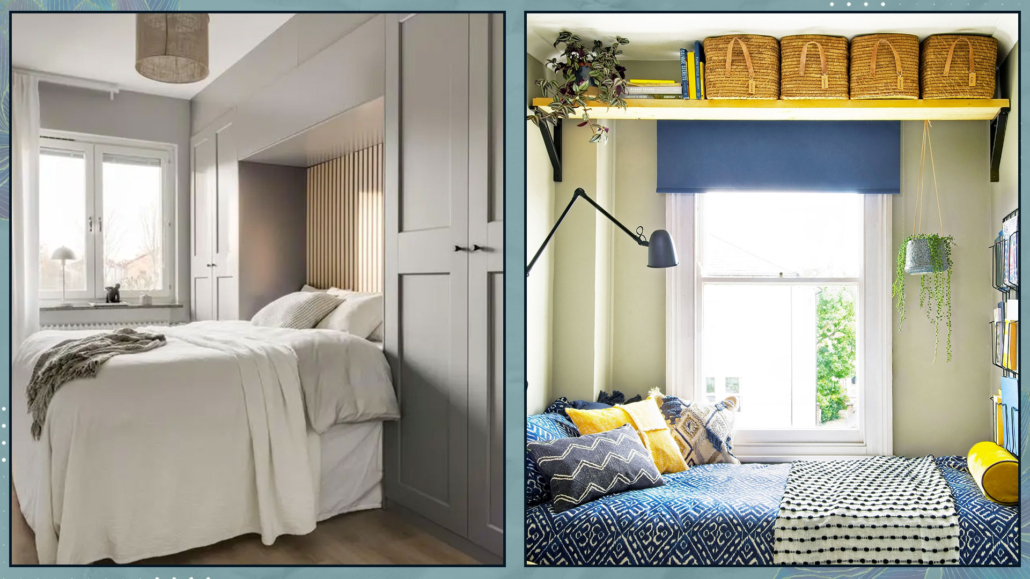
(credits: svenskfast.se; thatssogemma.com)
– PAY ATTENTION TO NIGHTSTANDS
Classic nightstands might not fit in small spaces, but as mentioned before, that’s not a good reason to go without them!
It’s essential to have something to place, if only an alarm clock, a book, or a pack of tissues.
Anything can serve as a nightstand, like a chair, or a stool (as long as it matches the chosen style!)
If you prefer, you can opt for two small shelves, cubes, or tiny suspended drawers.
And if it indeed becomes difficult, you can place a large shelf above the bed!
Obviously, if you’re single, you can have just one nightstand, even if you have a double bed!
Aesthetically, you can also choose two different types of nightstands, but if you want a balanced relationship, according to Feng Shui, the nightstands should be identical!
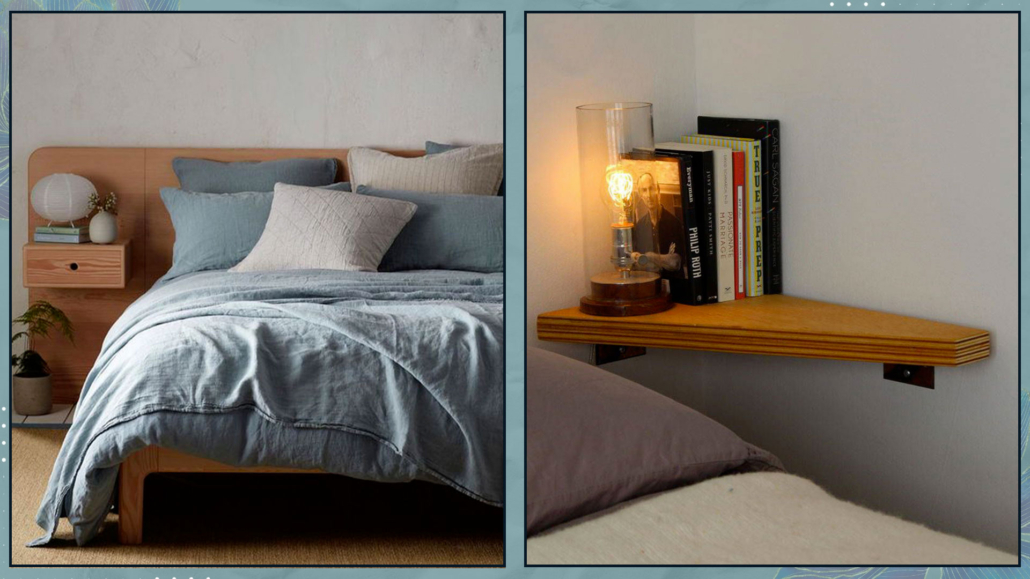
(credits: Fabmood.com; mykidstime.com)
– SIMPLE, LINEAR, AND MULTIFUNCTIONAL FURNITURE
As we’ve seen when discussing tiny homes in total, choosing furniture with simple and minimalist lines is a good idea to avoid weighing down the room!
Ideally, all furniture should have legs to allow you to glimpse the space underneath and create the impression of a larger environment.
For example, having a shelf or a hanging drawer as a nightstand allows you to use the space underneath, perhaps with a basket that, besides being decorative, will give you additional storage space.
In a small bedroom, it might be convenient to have a storage bed or a bed with drawers.
However, this can weigh down the environment a bit (in addition to not being ideal from a Feng Shui perspective, as it doesn’t allow energy to flow freely).
Always keeping your needs in mind, consider the possibility of a bed with legs and then potentially placing boxes (perhaps on wheels) underneath.
The boxes will be more hidden under the bed, revealing some of the floor, which will visually enlarge the space.
That will also help with cleaning, as you can effortlessly move the boxes, allowing energy to flow better, so it is better also from a Feng Shui perspective!!

(credits: zevemomo.com; joyfulderivatives.com)
– COLORS
As you know, light colors reflect light best and help make the room airy and bright.
However, as we’ve said other times, dark colors can be an excellent option for the bedroom.
That is because dark colors provide depth and are enveloping, giving the sensation of a hug!
Additionally, the fact that they don’t reflect light can help promote sleep.
Whether choosing light or dark colors, you only have to be mindful of avoiding high contrasts that can create somewhat a boundary and visually shrink the space.
Another consideration when choosing colors is to avoid vivid colors, except in small doses of minor elements.
That is because they are stimulating and do not promote good sleep!
Great colors for the bedroom are greens, blues, and browns in all their shades, from the lightest, almost neutral tones to the darker ones!

(credits: cocolapinedesign.com; Jotun)
– MIRRORS
A mirror should never be missing in a bedroom, especially if it’s the room where you get dressed: it’s paramount to check your appearance before going out!
If the room is small, the mirror becomes essential to enlarge it and increase the light visually!
An excellent position for the mirror would be opposite the window, but this is not ideal from a Feng Shui perspective, as it reflects energy back, so it’s better if it’s at least angled.
Speaking of Feng Shui, it’s also vital that the mirror does not reflect the bed and the person sleeping in it.
That is because reflecting energy could cause insomnia or interfere with restful sleep.
If no position of the mirror doesn’t reflect the bed and you don’t want to give up the mirror, try covering it at night!
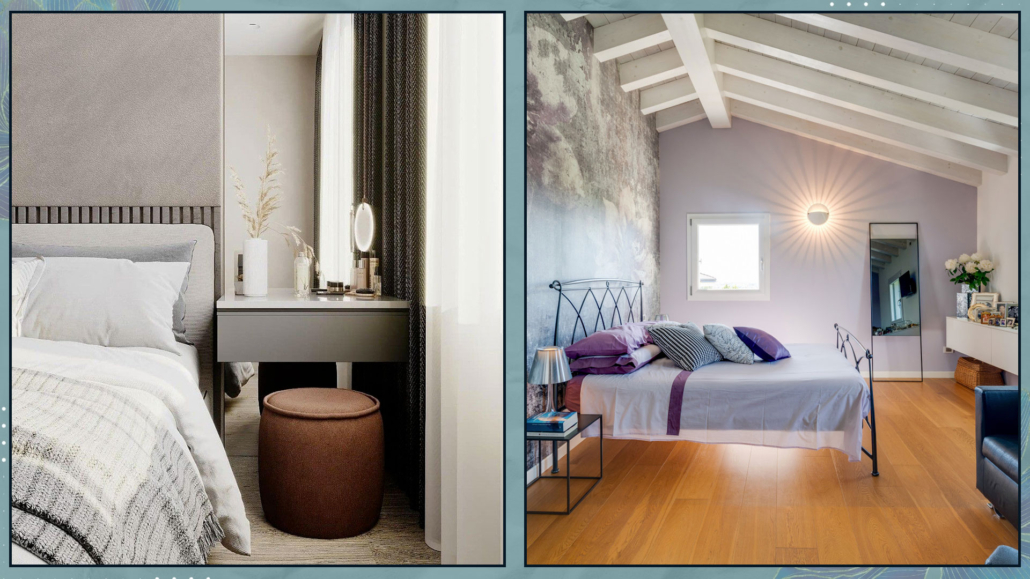
(credits: @obsessed4interiors; spazifluidi.it)
– LIGHTING
As you’ve heard me say many times, light is always fundamental!
If it’s true, as mentioned earlier, that you can use dark colors in the bedroom, even if it’s small because they are enveloping and reassuring, it’s also true that for it to be cozy, you must accurately light it!
Natural light is always the best and most preferable, so be careful not to cover windows or French doors with furniture or heavy curtains.
Use lightweight, very sheer curtains to make the most of the light.
If you love double curtains, which are helpful in the bedroom to prevent nighttime lights from disturbing sleep, ensure they only cover the wall and leave the windows completely free when they are open.
Then, plan the artificial lighting well.
You won’t be surprised when I tell you it’s crucial to have multiple light sources: a general light, preferably dimmable, and then other light points, for sure near the bed and perhaps near the wardrobe.
The light should be warm, soft, and diffused to promote relaxation!
For the light near the bed, if you only have small shelves, use wall lights to avoid “stealing” space.
That is also a way to utilize heights, as I suggested in point two!
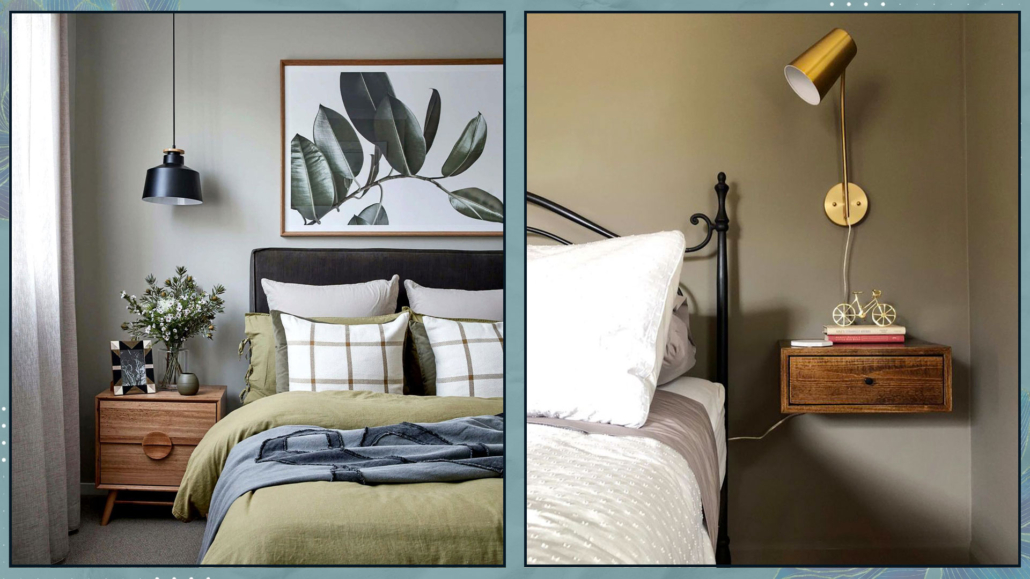
(credits: tlcinteriors.com.au; thathomebirdlife.com)
– ORDER
You expected this point, didn’t you?
Yes, order is vital in a small bedroom, primarily because clutter visually shrinks the room but also because it makes it far from inviting!
A room with fewer pieces of furniture (as I mentioned in the first point) and functional and intentionally chosen objects, kept well-organized, will undoubtedly be more welcoming and inviting!
Even from a Feng Shui perspective, clutter drains energy and thus disturbs sleep!

(credits: laredoute.com; heygraceann)
– DRESS THE BED
Whenever I discuss the bedroom, I emphasize the importance of dressing the bed.
You don’t need many things, as they could overwhelm the space!
But don’t forgo a few decorative pillows and perhaps a nice throw at the foot of the bed.
The bed will be super inviting, making the room, even the smallest one, truly elegant and cozy.
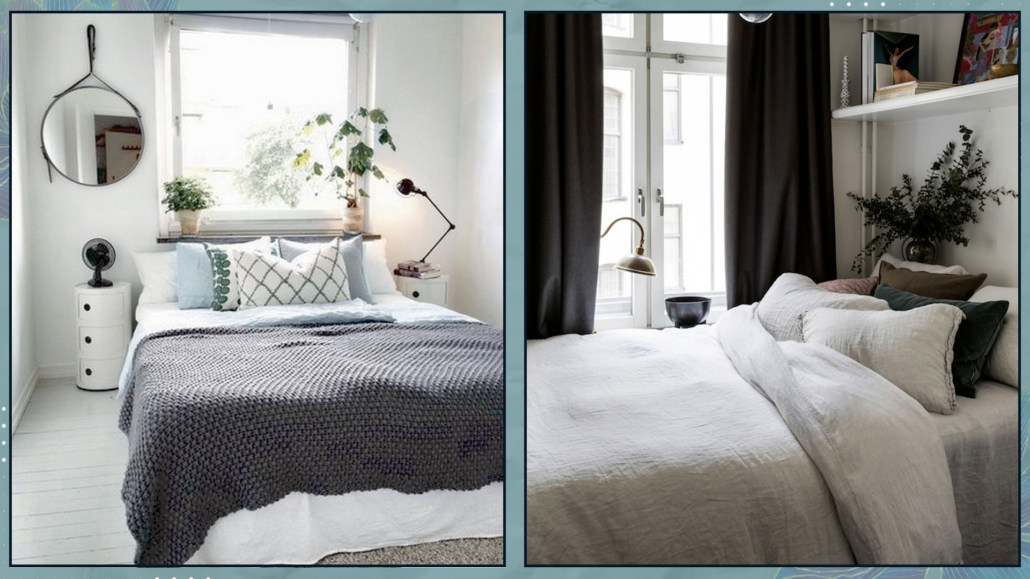
(credits: StyleRoom.se; apartmenttherapy.com)
– PLANTS AND SCENTS
Last but not least, to make the bedroom cozy are plants and scents!
No matter how small the room is, these two things should NEVER be missing!
For scents, a small aroma diffuser or those little bottles with sticks will be enough; You can place it on the nightstand without taking up too much space.
For plants, even only a leaf or some beautiful branches in a small vase will do, or you can utilize heights by hanging them or placing them on shelves!

(credits: bloglovin.com; amazon)
I hope this article has been helpful and enjoyable for you. If so, let me know in the comments!
Feel free to share it with anyone you think might be interested, I would be honored, and it will help me gain more exposure.
If you feel that your home, or any specific area of it, doesn’t reflect your personality enough, don’t wait any longer and book your consultancy!

